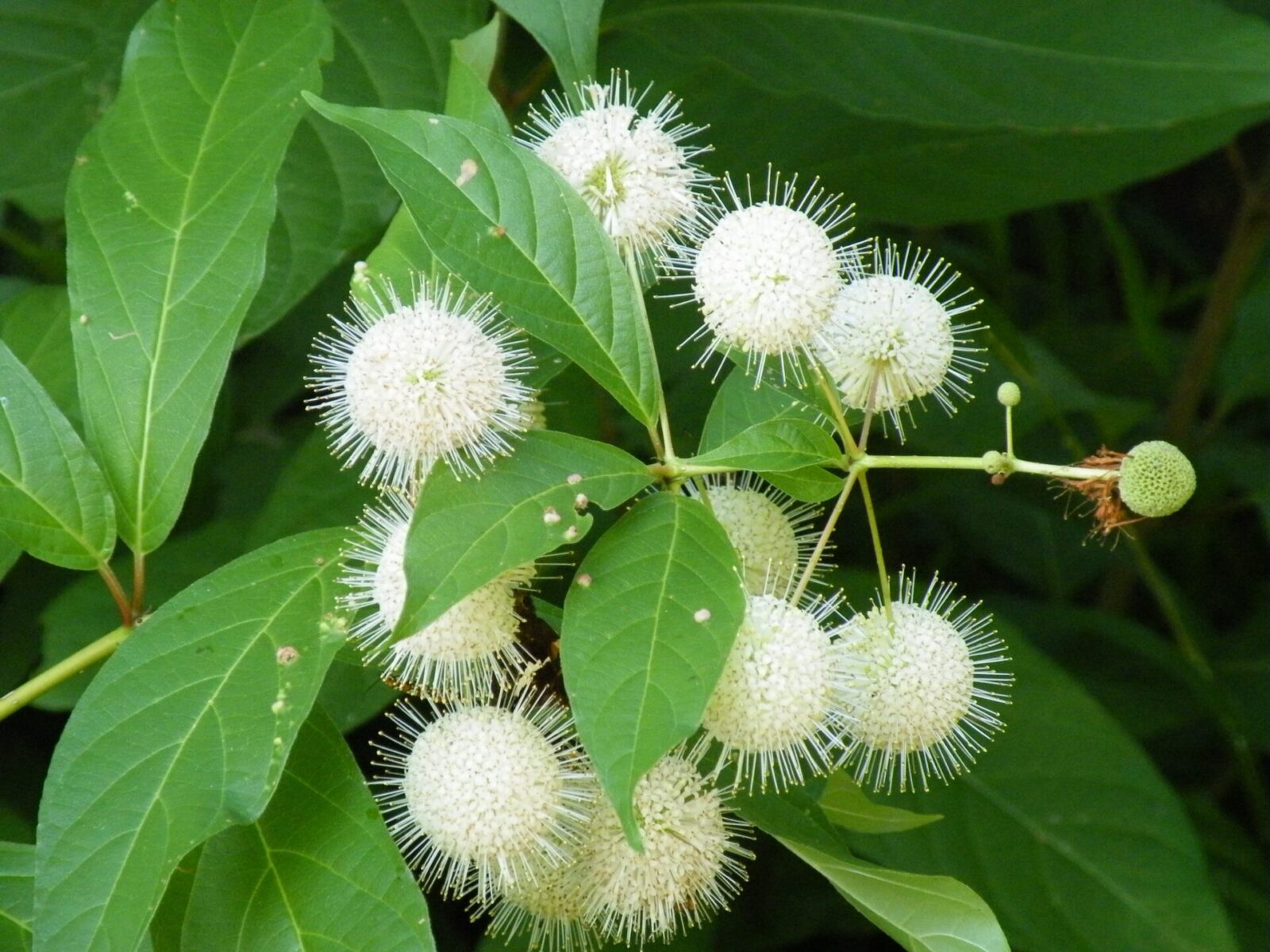“`markdown
# Buttonbush: A Native Wetland Wonder
Buttonbush (Cephalanthus occidentalis) stands as a testament to the resilience and beauty of North American wetlands. This native shrub, often overlooked, plays a crucial role in ecological balance and offers a unique aesthetic appeal. From its distinctive spherical flower heads to its adaptability in challenging environments, buttonbush deserves a closer look.
Botanical Characteristics and Identification
Buttonbush is a deciduous shrub, typically reaching heights of 3 to 12 feet, though it can occasionally grow into a small tree. Its most recognizable feature is its spherical flower head, resembling a pincushion, composed of numerous tiny, fragrant white flowers.

Leaves and Stems
Leaves: The leaves are opposite or whorled, oval to lance-shaped, and dark green with smooth or slightly toothed margins. They typically measure 2 to 6 inches in length.
Flowers and Fruits
Flowers: The flowers bloom from June to September, depending on the region. They are clustered into dense, globular heads, about 1 inch in diameter. Each flower has a long, protruding style, giving the flower head a fuzzy appearance.
:max_bytes(150000):strip_icc()/buttonbush-growing-guide-5323850-hero-507a0357b3c24bad98e51c35d1338a8a.jpg)
Habitat and Distribution
Buttonbush thrives in wet environments, making it a common sight in swamps, marshes, floodplains, and along pond and stream edges. Its natural range extends throughout eastern North America, from Canada down to Florida and west to Texas and California.
Preferred Growing Conditions
Soil: Buttonbush prefers consistently moist to wet soils, including clay, loam, and sandy soils. It tolerates poor drainage and even standing water.
Ecological Roles
Buttonbush plays a vital role in wetland ecosystems. It provides habitat and food for a variety of wildlife, helps stabilize shorelines, and contributes to water filtration.
Ecological Significance
Buttonbush’s ecological contributions are significant, making it a valuable component of wetland ecosystems.
Wildlife Habitat
Pollinators: The fragrant flowers attract a wide range of pollinators, including bees, butterflies, and moths.
Shoreline Stabilization
Erosion Control: Buttonbush’s robust root system helps to stabilize soil and prevent erosion along shorelines and stream banks.
Water Filtration
Nutrient Uptake: Buttonbush’s roots absorb excess nutrients from the water, helping to prevent eutrophication.
Cultivation and Landscape Uses
Buttonbush’s unique appearance and adaptability make it a desirable plant for wetland gardens and restoration projects.
Propagation
Seed: Seeds can be sown in the fall or stratified and sown in the spring.
Planting and Care
Site Selection: Choose a location with consistently moist to wet soil and full sun to partial shade.
Landscape Applications
Wetland Gardens: Buttonbush is ideal for rain gardens, pond edges, and other wet areas.
Potential Challenges and Considerations
While buttonbush is a hardy and adaptable plant, there are some potential challenges to consider.
Pests and Diseases
Aphids: Aphids may attack new growth, but they are usually not a significant problem.
Management
Water Management: Ensuring proper drainage is crucial to prevent root rot.
Cultural and Historical Significance
Buttonbush has a long history of use by Native American tribes for medicinal purposes.
Traditional Uses
Medicinal Uses: Native Americans used buttonbush to treat a variety of ailments, including fevers, headaches, and skin conditions.
Modern Uses
Restoration Projects: Buttonbush is widely used in wetland restoration projects due to its ability to stabilize shorelines and improve water quality.
Varieties and Cultivars
While the species Cephalanthus occidentalis is the most common, there are a few cultivars that offer variations in size and flowering.
‘Sputnik’
A more compact cultivar, ideal for smaller gardens.
‘Sugar Shack’
A dwarf variety, growing to about 3-4 feet tall.
Conclusion
Buttonbush is a valuable native shrub that offers a unique combination of beauty and ecological benefits. Its adaptability to wet environments, its role in supporting wildlife, and its contribution to shoreline stabilization make it an essential component of wetland ecosystems. Whether used in restoration projects or cultivated in home gardens, buttonbush serves as a reminder of the importance of preserving and appreciating our native flora. Its distinctive flowers and its vital role in the environment make it a true wetland wonder.
“`


